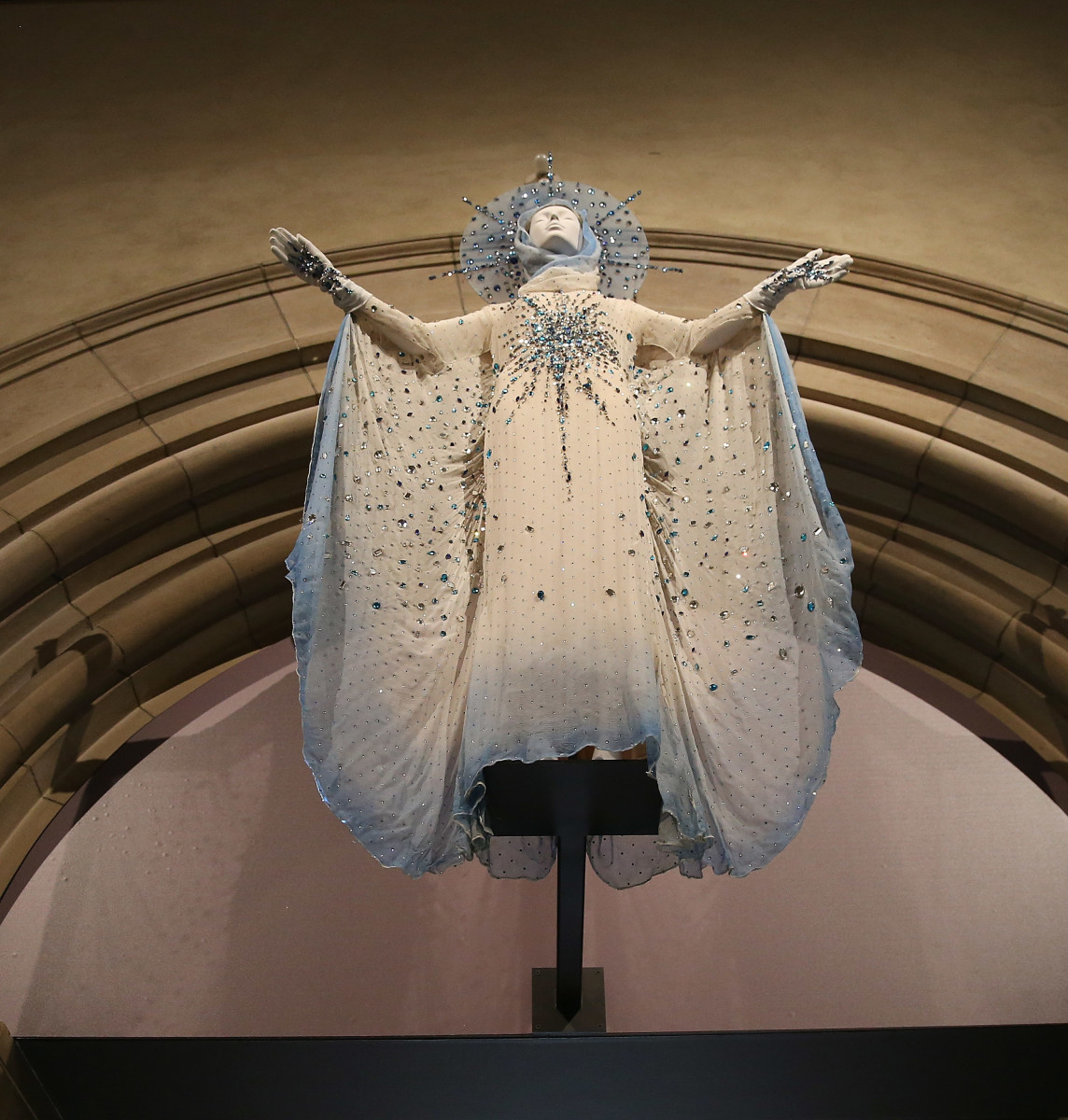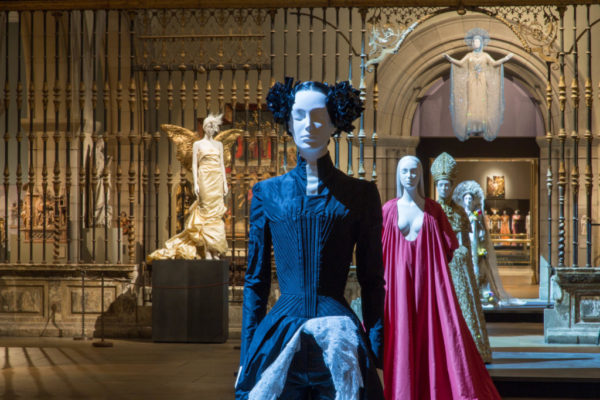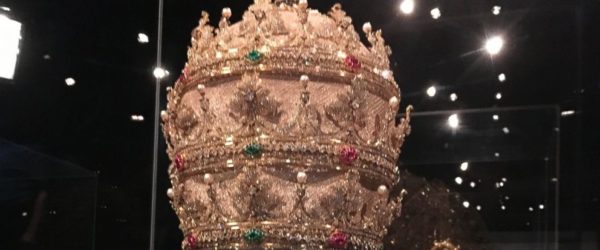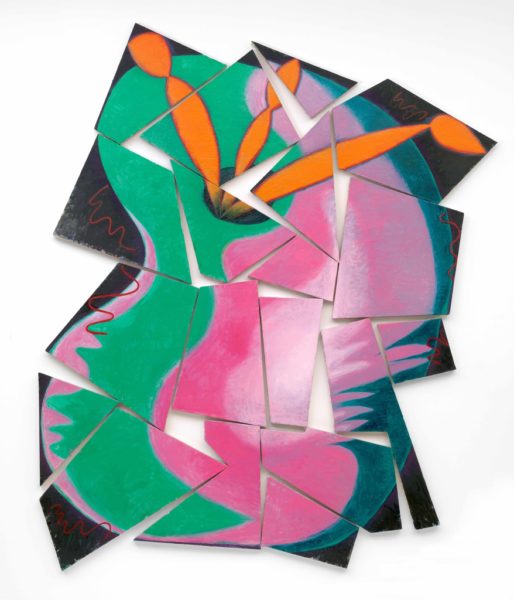
13 May TIO NYC: Cole, Catholicism, & Shoes, Oh My !
To date, the current resident of 16 Pennsylvania Avenue and his band of merry men, particularly one Scott Pruitt, have gutted the EPA’s budget under the guise of fixing budget issues; killed the Paris Climate Agreement, denying climate change; and in general relaxed environmental rules it sees as overly burdensome to the fossil fuel industry – which started wreaking its particular brand of havoc, degrading the environment, way back during the Industrial Revolution, roughly 1760– 1840.

“The Mountain Ford,” by Thomas Cole.
Which falls into the period Thomas Cole, (1801–1848), painted his romantic landscapes, with a subtext, some say – curators of the show now at the Met for example – that is best summed up as “a fervent visual warning… to his fellow American citizens of the harsh ecological cost of unchecked development of the land” – as a result of factory sprawl and industrialization in general, which displaces and despoils the natural world.
With a series of paintings entitled “The Course of the Empire,” Cole achieved what he described as a “higher style of landscape,” one suffused with historical associations, moralistic narrative, and what the artist felt were universal truths about mankind and our abiding relationship with Mother Nature.
“The Course of the Empire” grouping is among the paintings at Thomas Cole’s Journey” a show at the Met which marks the 200th anniversary of Cole’s first Atlantic crossing, when the artist emigrated from England to the United States in 1818.
It also examines in depth Cole’s return journey to England in 1829–31 and his travels in Italy in 1831–32, revealing the systematic development of his artistic processes.
The intelligent, inspiring exhibition brings to forefront the dialogue between American and European artists in the mid-19th century by juxtaposing Cole’s work with paintings he studied on his travels, including breathtaking works by J. M. W. Turner, a father of modern abstraction, and John Constable, among others.

“Twilight in the Wilderness,” by Frederic Church.
The show concludes with an examination of Cole’s extraordinary legacy in the work of the next generation of American landscape painters whom he personally mentored, notably Asher B. Durand and Frederic E. Church of the Hudson River School.
Run! “Thomas Cole’s Journey” closes May 13.
But “Heavenly Bodies,” which we saw the same day, just opened and is up through October 8.

The blockbuster show, the largest for the Costume Institute in the Met’s history, is a whole lot of pomp and circumstance, complete with sound track, to make a point about the relationship between truth, beauty, goodness (the Church) – and fashion – Versace in particular, which underwrote the show along with Blackstone’s Stephen A. Schwarzman and his wife Christine, a Catholic.
“Heavenly Bodies” features major league designers, all Catholics, like Gaultier, Givenchy, Yves St Laurent, and rare riches from the Vatican, which to date had never left Rome.
The sum of all the moving parts, in three different Met locations, is meant to underline the complex, ongoing and dynamic dialogue between religion and the world of fashion.
If “Heavenly Bodies” is a sly reference to models like Pat Cleveland, who once upon a time wore the garment by Thierry Mugler on display at the show, well then, we get it.

Pat Cleveland as Madonna descended from the ceiling at the 1984 Thierry Mugler 10th anniversary show. The garment is now on display at “Heavenly Bodies.”
Otherwise, we have to admit it was good fun genuflecting at the altar of excess that characterizes the worlds of high fashion and high holy ritual, an intersection and a space where class and mass rarely meet, except when the latter worships the former – from afar.

‘Heavenly Bodies” proves nothing succeeds like excess.
May the saints preserve us.
The exhibition overview follows:
The Costume Institute’s spring 2018 exhibition—at The Met Fifth Avenue and The Met Cloisters—features a dialogue between fashion and medieval art from The Met collection to examine fashion’s ongoing engagement with the devotional practices and traditions of Catholicism.
Serving as the cornerstone of the exhibition, papal robes and accessories from the Sistine Chapel sacristy, many of which have never been seen outside The Vatican, are on view in the Anna Wintour Costume Center. Fashions from the early twentieth century to the present are shown in the Byzantine and medieval galleries, part of the Robert Lehman Wing, and at The Met Cloisters.
And here’s a great review of “Heavenly Bodies” from the New York Times.
While we are on the subject of excess, “Walk This Way: Footwear from the Stuart Weitzman Collection of Historic Shoes,” is a delight, a perfect pause that refreshed – particularly if you misspent your girlhood listening to the story of Cinderella for the umpteenth time and believed in your heart that one day your prince would come, glass slipper in hand.
(Clint came, but he was carrying skis.)

A Cinderella show by Stuart Weitzman.
Imelda Marcos’ wet dream, “Walk This Way,” up now at the New York Historical Society through October 8, highlights 100-plus pairs of pumps, mules and more from Weitzman’s private collection, many gifts from his wife who solved the problem of what to give the man who has everything with all manner of historic footwear and accessories.

The original version of Stuart Weitzman’s Million Dollar Shoe debuted at the 2002 Academy Awards on “Mulholland Drive” star Laura Harring. It was adorned with 464 diamonds.
Spanning nearly 200 years — from a pair of 19th-century “boudoir” slippers to modern-day sustainable platform sneakers — the show illustrates how the evolution of feminine footwear coincides with women’s changing roles in society.
Whatever.
Just go and have fun.
“Studio Visit: Selected Gifts from Agnes Gund” up now at the Museum of Modern Art through July 22 is a wonderful walk down memory lane, a celebrations of modern art.
The exhibition celebrates Gund’s contributions as a patron of the arts, collector and longtime Trustee of The Museum of Modern Art and MoMA PS1, by paying tribute to some of the more than 800 works of art Gund funded over the past half century, a mixed bag of paintings and sculpture that reveals a discerning eye – and deep pockets.



Sorry, the comment form is closed at this time.